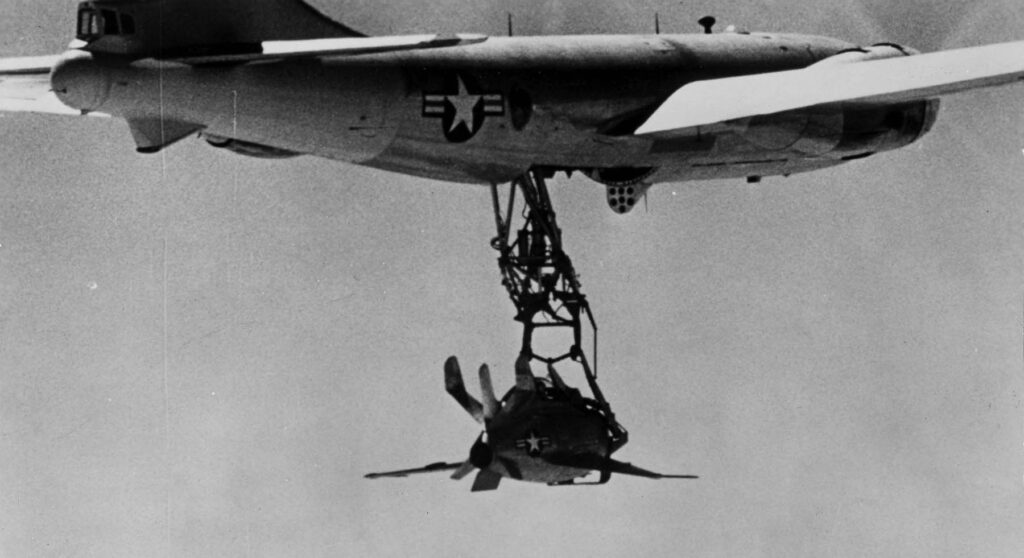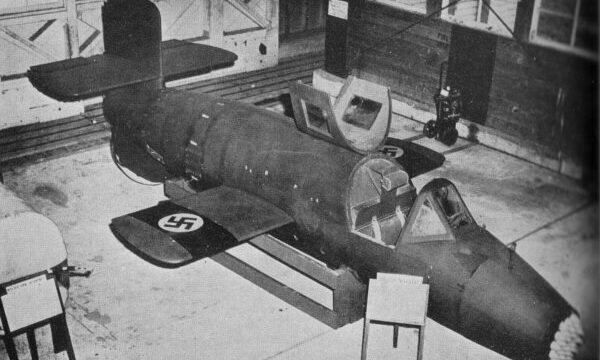World War II didn’t only change the world but also military technology.
If conflict encourages human industry, a conflict like World War II does so to the maximum. And it did. Atomic weapons, ballistic missiles, and strategic bombers are just some of the inventions that came out of the conflict.
When it comes to aircraft, two airplanes – that were futuristic for the time – stand out. Yet, you’ve probably never heard of them because their role in the fighting was from minute to non-existent.
Bachem Ba-349 Natter: The German viper
The Germans were pioneers in weapon development before and during the war. It is a fact that the German military enjoyed a clear qualitative superiority over the Allies overall. For example, German main battle tanks such as the Tiger I, Panther, and Tiger II had no opponent in one-versus-one encounters. The Allies, on the other hand, could simply outproduce the Germans. It might take three or five M4 Sherman to take out one Tiger I, but the Allies could easily afford that level of attrition.
As the war went increasingly poorly for the Germans, the Nazi regime started working on even more extreme ideas. Adolf Hitler and his subordinates sought victory in “wunderwaffe,” or wonder-weapons. These weapons, which included the atomic bomb, would grasp victory from the jaws of defeat. They didn’t. But not for a lack of trying.
One of the most creative wonder-weapons was the Bachem Ba-349 Natter.

A rocket-propelled jet designed to take out Allied strategic bombers, the Ba-349 Natter was, in many ways, a flying rocket launcher. Developed in the last months of the war by a desperate Germany, the idea for the innovative aircraft came into existence in late 1944. Testing began in early 1945, and the first manned flight took place on March 1 (the war in Europe would end in early May).
The test pilot was Lothar Sieber. He managed to take the aircraft to about 1,600 feet, becoming, in the process, the first man to launch a vertical rocket, 16 years before Soviet cosmonaut Yuri Gagarin. However, the Natter quickly descended, but Sieber failed to eject, thus becoming the first and only casualty of the Natter program.
The Ba-349 Natter’s mission was simple. Fly high and start descending on a group of Allied bombers. Once in range of the Allied aircraft, unleash its salvo of missiles, before descending to an altitude safe for the pilot to eject.
The Ba-349 Natter was equipped with 24 Henschel Hs 217 “Föhn” rockets on its nose. These unguided munitions had a range of approximately 4,000 feet and were a very early version of air-to-air missiles. It could reach speeds of 620 miles per hour, or more than 200 miles more than the P-51 Mustang, and could operate at altitudes close to 40,000 feet.
The jet aircraft was built primarily of wood and other easily accessible materials so as not to interrupt other ongoing production as, by that point in the war, German industry was facing serious shortages from Allied bombing.
All in all, the German military built about 10 operational Natters. However, they didn’t see any action and all were destroyed before they fell into Allied hands.
McDonnell XF-85 Goblin: The American parasite fighter

Much like Germany developed an aircraft to take on Allied strategic bombers, so did the Allies develop concepts to protect their bombers. The McDonnell XF-85 Goblin was such a concept.
Designed to be deployed by B-36 Peacemaker strategic bombers, which would act as motherships, the XF-85 Goblin was an extraordinary aircraft.
The fighter jet had room for only a pilot and weighed approximately 4,550 pounds. Using one Westinghouse XJ-34 turbojet engine, which could produce 3,000 lbs of thrust, the XF-85 Goblin could achieve maximum speeds of 650 miles per hour. That was faster than the Ba-349 and much faster than the P-51 Mustang, which was escorting bombers, could muster.
The XF-85 Goblin packed quite a punch with four 0.50 caliber Browning M2 heavy machine guns and 1,000 rounds of ammunition. As far as endurance, the fighter jet could stay in the air for about 80 minutes.
Related: Guile, violence, and intelligence – The tools of the WW2 spy

The XF-85 never flew in the war. Although the concept kept growing, Nazi Germany and Imperial Japan capitulated before it could materialize. The U.S. military only ordered two aircraft two months after the war ended.
However, the concept survived. Testing with the trapeze began in 1948 with a modified B-29. During initial testing, the newly founded U.S. Air Force could launch XF-85 from bombers but had difficulty recovering them because of air turbulence. Half the test flights ended with the XF-85 test pilots performing emergency landings. Eventually, the Air Force lost interest, and the program was canceled in 1949. No XF-85 was ever launched from a B-36 Peacemaker.
For fans of video games, you can get a taste of the Ba-349 Natter and XF-85 Goblin in Battlefield 1942: Secret Weapons of WWII.
Feature Image: Bachem Ba-349 rocket-propelled interceptor taken to Britain after the war’s end. (Wikimedia Commons)
Read more from Sandboxx News
- Investigation into ‘preventable’ drowning deaths of two Navy SEALs sure to bring changes
- German commandos get an extremely progressive new handgun
- The night when police and Delta Force men patrolled the streets of New Orleans
- These hardcore Air Force crews fly into the walls of deadly hurricanes
- Video: Did the Air Force use F-117 Night Hawks to attack ISIS in 2017?










